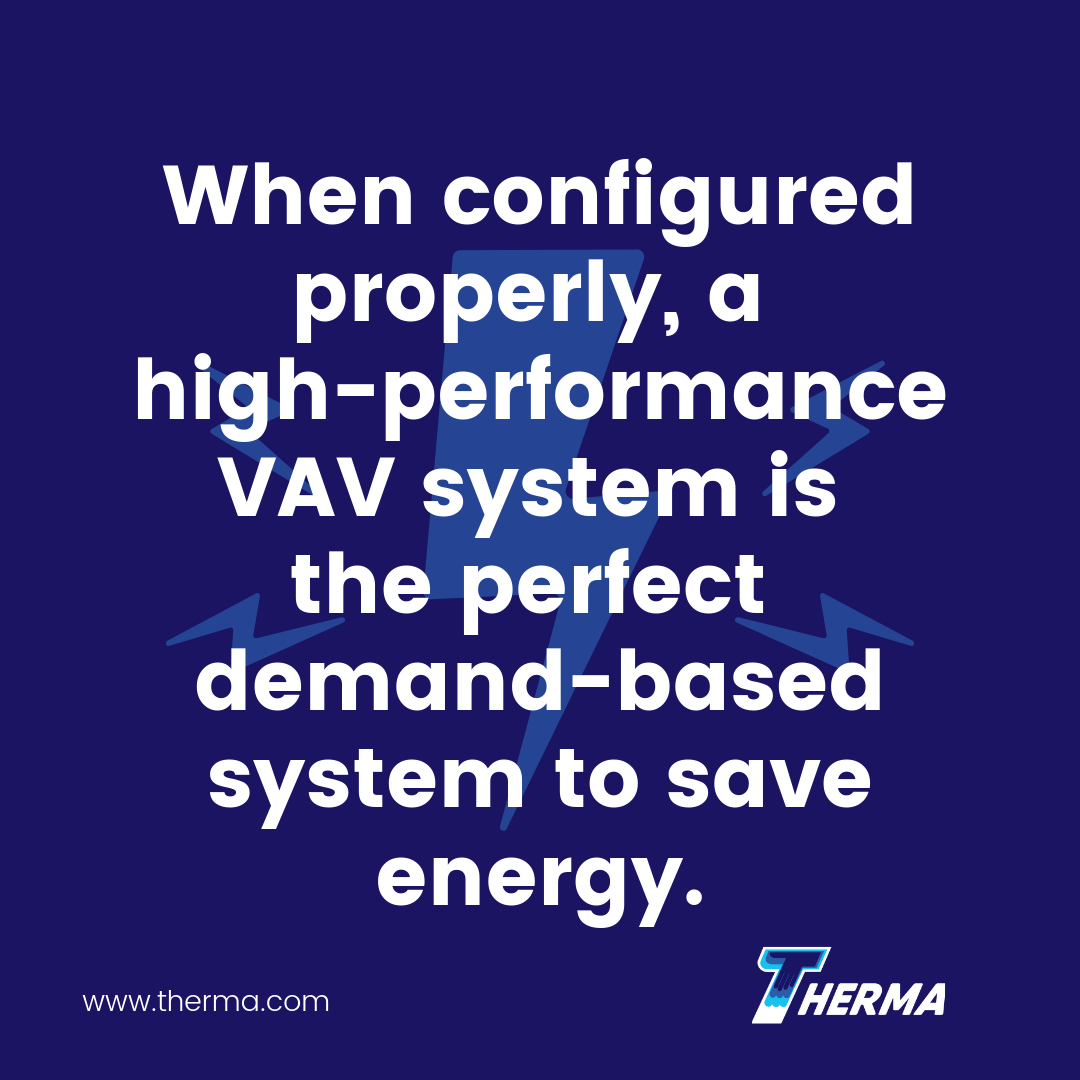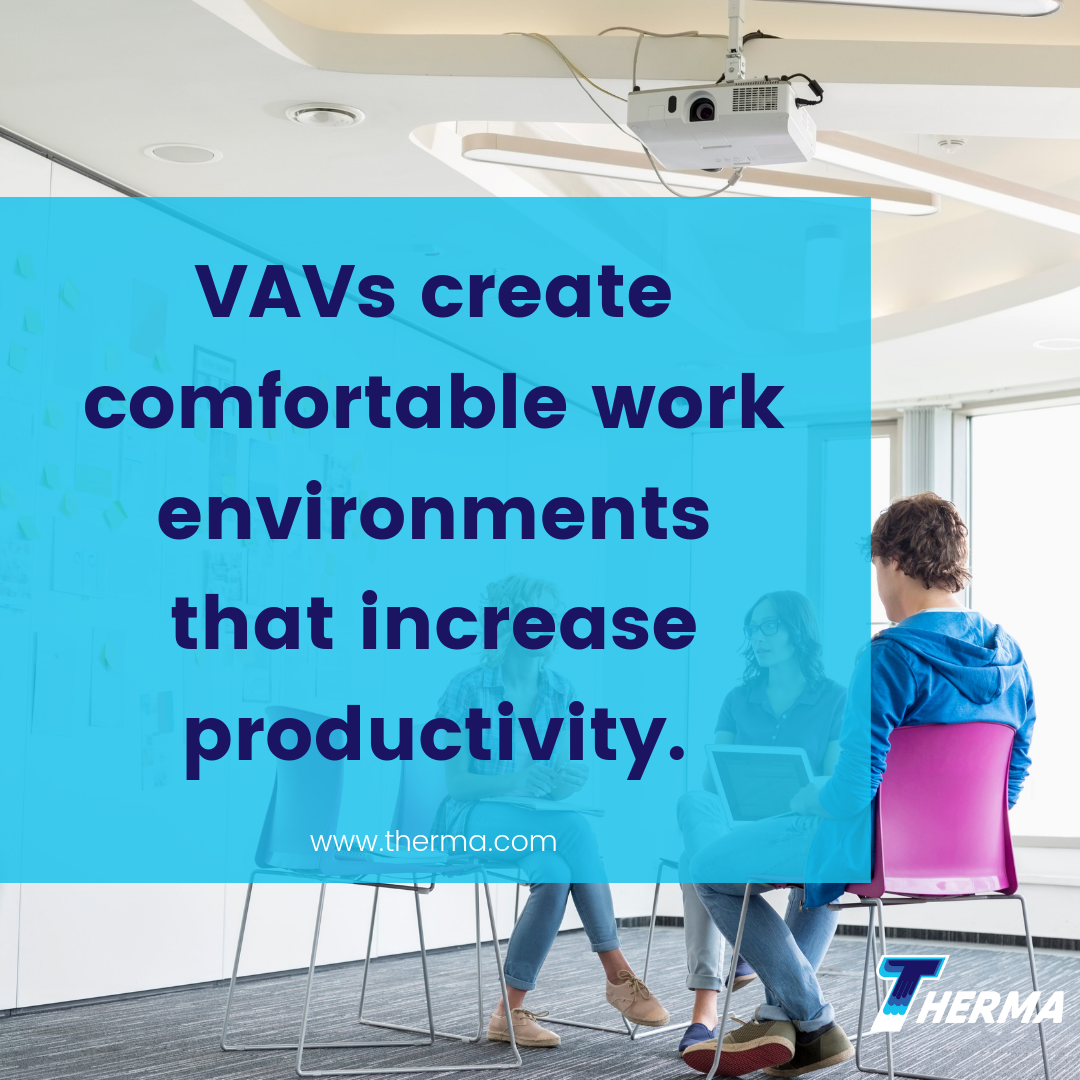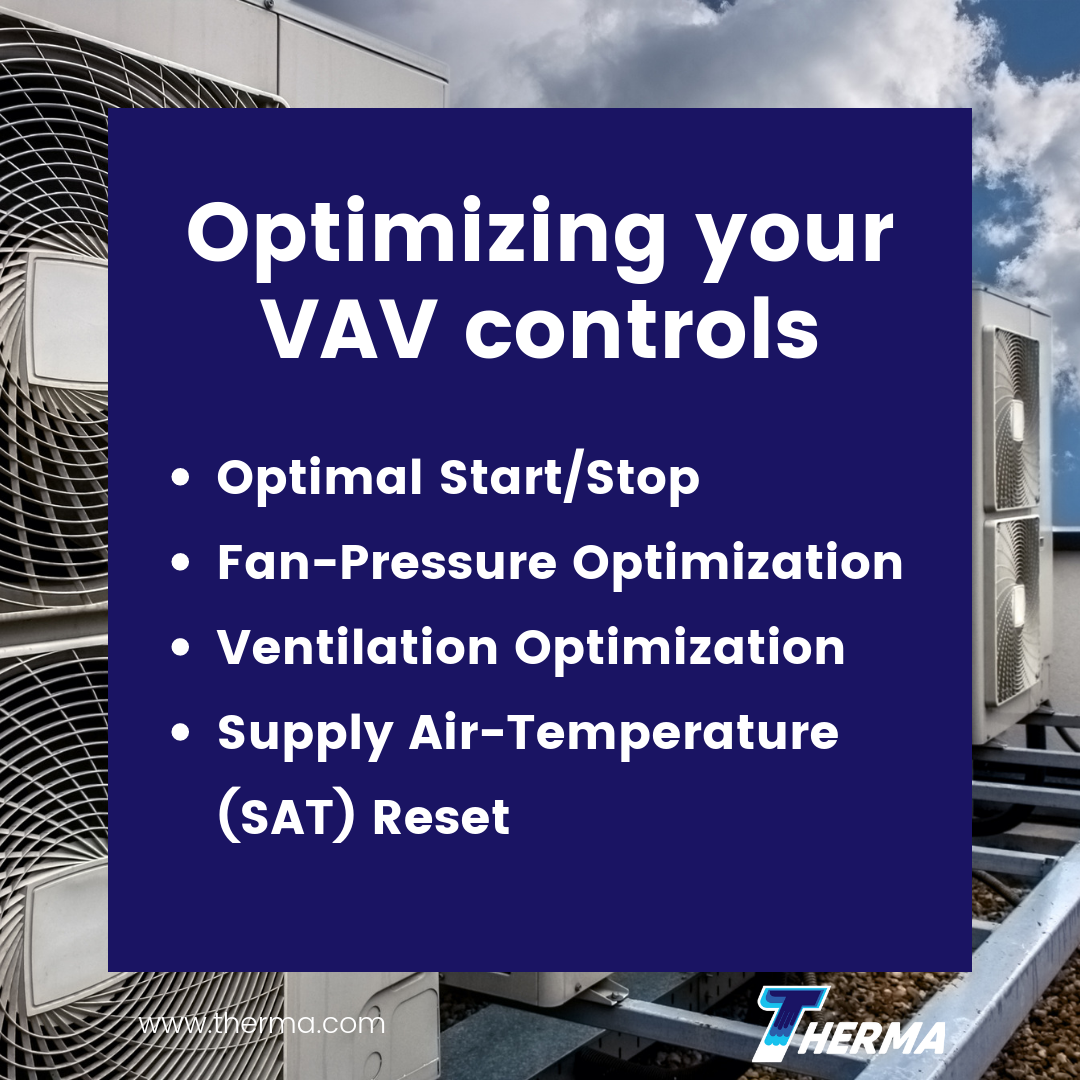Case for High Performance VAV Systems
By Richard Ashworth
Variable Air Volume systems are ideal for commercial types of environments where zoning is needed. When set up properly from the fan to the control system, VAV systems can be high performance and offer added efficiency by reducing utility costs.
The efficiency of these systems depends on equipment, following basic guidelines and the proper implementation of the control system. The control system also provides maintenance staff better monitoring and control and helps them to identify problem areas quickly.
When configured properly, a high-performance VAV system is the perfect demand-based system to save energy.
About VAV Systems
A Variable Air Volume system is a type of air-handling system that changes the amount of airflow in response to changes in the heating and cooling load. It offers a substantial energy savings and is becoming widespread. This is because it can respond to changing load requirements by varying the heated or cooled air distributed to the conditioned space and in turn minimize fan power to save energy costs. The VAV boxes have damper to open and close and fans to mix the airflow for modulation. When more cooling is required, the damper opens to allow for more airflow as static pressure in the duct drops to initiate the air handler fan to increase the air supply.
Conversely, when warming is required the damper closes to lower cool airflow into the space and reduce air handler fan power to save energy. The automatic turn-off of the system to conserve energy is the most popular feature of VAV system that is helping convince building owners to adapt to this system. The ultimate goal of VAV systems is a VAV zone for every building space to provide temperature satisfaction and minimize energy usage. It results in comfort and higher productivity for workers. For the building owner/manager it improves the ability of occupancy of the space for lease.
Design Considerations
A VAV system has a fan, filters, cooling and heating coils, supply and return ducting, and VAV terminals/ thermostat for each room. In most applications, the fan has a Variable-Speed drive (VSD) to reduce fan speed.
According to the design guidelines by the Pacific Gas and Electric Company (2007) for the California Public Utilities Commission, selecting a VAV box significantly impacts energy and comfort control. Larger VAV boxes have low pressure drops that impact lower fan energy. This, however, means having a higher minimum airflow setpoint that will increase fan energy and reheat energy. Smaller VAV boxes, on the other hand, generate more noise compared to the larger VAV boxes under equal airflow.
VAV System Control Optimization
The first goal is to optimize the control to ensure high performance, using the following strategies
- Optimal Start/Stop: This strategy utilizes the building automation system to detect the duration for setting the occupied temperature from the current temperature in each zone. The system should be waiting long enough before starting up to ensure the temperature in each zone is at their respective setpoints before occupancy. By doing so, it lowers system operating hours and saves energy.
- Fan-Pressure Optimization: This occurs during the cooling phases as the loads change for the VAV terminals to modulate airflows in the space zone. As a result, pressure in the duct changes and the VAV air-handling unit adjusts the speed of the supply fan to maintain a static pressure. Communicating controllers on the terminals optimize the static pressure to reduce duct pressure and in turn save on fan energy.
- Supply Air-Temperature (SAT) Reset: The supply-air temperature in this scenario may be raised to save reheat energy at part load conditions. This permits the compressor to cycle off. Additionally, the SAT reset uses an air economizer to cool the incoming air while shutting off the compressor when the outdoor air is cooler than the set SAT point. Conversely, a higher temperature set point for the SAT allows the compressor to shut-off within a shorter period to increase the time the economizer can provide required the cooling.
- Ventilation Optimization: The VAV air handling/rooftop unit supplies fresh outdoor air to various controlled zones. Demand-Controlled ventilation pertains to resetting intake airflows in response to variations in zone population.
- Section C403.2.6.1 of the IECC 2015 System Efficiency code dictates a DCV for areas that service an area greater than 500 ft2 or more than 25 people / 1,000 ft2.
Recommendations for Low Energy VAV Systems
- The fan power should not exceed 0.72 W/cfm.
- Install variable speed drive on the fan
- Controlling the VSD from static pressure sensor at the VAV terminal.
- Apply lowest pressure drops in air systems; this can be conducted on the fan to minimize a fan outlet effect using a straight duct in the direction of the fan rotation.
- Prefilters should be avoided and larger filter banks adopted to fit the available space.
- Supply air ducting should be made as straight as possible to minimize transitions and joints.
- The largest possible coils should be selected with maximum face velocity of 45fpm and minimum water side temperature difference of 15˚F.
- For risers, the shaft should be close to the air handler but not directly under it for sound attenuation.
- The need for reheat should be eliminated by adopting a different air handling unit. In any case, where it is impossible to eliminate, the base air temperature should be raised, and a Supply Air Temperature (SAT) reset control during cool weather.
Biography:
Richard Ashworth works in construction testing mechanical and electrical equipment to satisfy engineering specifications. In his spare time, he writes articles for several trade and engineering publications and is a contributor to engineering college text books.
References
- Dodd, M., & EnergySoft, L. L. C. (2012). Comparing energy savings of different VAV systems. EnergySoft LLC, 1-9.
- California Energy Commission. (2007). Advanced variable air volume system design guide.
- Murphy, J. (2011). High-performance VAV systems. Ashrae Journal, 53(10), 18.
- Resources
- https://highperformancehvac.com/how-do-vav-boxes-work-commercial-hvac-systems/
- https://www.wbdg.org/resources/high-performance-hvac










